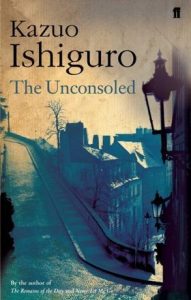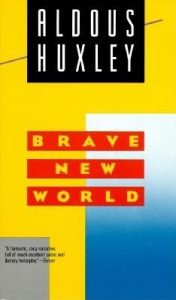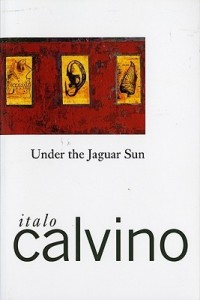 Picking up Alphabet by Kathy Page, I had no idea what to expect. I hadn’t read the back or the press release that accompanied my review copy. For all I knew, it was some experimental work based entirely on word play. It wasn’t, the narrative and language are much more conventional than that, but I’m so glad I went into this book blind because it allowed me that rare chance to encounter the story and the characters on the author’s terms with all the craft of reveal that entails. So if you want to read this excellent book as blind as I did, stop reading here. Trust me, it’s worth it.
Picking up Alphabet by Kathy Page, I had no idea what to expect. I hadn’t read the back or the press release that accompanied my review copy. For all I knew, it was some experimental work based entirely on word play. It wasn’t, the narrative and language are much more conventional than that, but I’m so glad I went into this book blind because it allowed me that rare chance to encounter the story and the characters on the author’s terms with all the craft of reveal that entails. So if you want to read this excellent book as blind as I did, stop reading here. Trust me, it’s worth it.
The Man Behind the Crime
When we first meet Simon Austen, he’s being inducted into prison. His clothes have been taken and a guard is examining his property, which seems to consist solely of a sealed letter written by his mother and given to him by a social worker. We can tell from the language that the story is taking place in Britain. Simon seems young and shell-shocked. We have no idea what crime he’s committed or how long he’s in for but already Page has made him seem vulnerable and already it’s easier to care more about the man than what he did. An unusual slant in today’s society and one that makes the book.
“He thinks how he could die here. Be killed. Start using drugs and do the job himself. Just get old… and all of a sudden, how badly he wants what he’s not had, all of it, even not knowing what it is!” – Kathy Page
In the second chapter we see Simon trying to learn to read. I immediately had sympathy for someone who the system had failed and who was trying to make better of himself. It might help that my grandfather taught inmates to read, but watching Simon, at an age where he’s eligible for prison, learn the alphabet and how letters make sounds is truly poignant (without being sappy). We see touches of his concern for the health of his tutor and then we see Simon succeed well enough that he begins writing letters for others.
We’re getting to know the man behind the crime and we’re learning to empathize with his situation, even before we have any idea what landed him behind bars in the first place.
Ambiguity
Simon is not always on the up and up, and (based on my coursework in criminology rather than my own personal experience) this book shows a realistic picture of prison and prisoners. Simon tries to fill his need for human connection by starting a correspondence with a stranger. Trouble is he lies about who (and where) he is. As a kid, I remember my mom’s Avon lady was married to a man in prison so every visit we had with her included at least some amount of time talking about his wrongful conviction. This turn in the story made me deeply uncomfortable, but because I’d already bonded a bit with Simon, it served to flesh him out as a three dimensional character rather than turn me off completely.
We do eventually learn what Simon’s done, and it is not pretty, but by that time we understand who he was when he did it and where he was coming from. It doesn’t excuse his actions, but it does give a lot of context especially as he tries and both succeeds and fails at bettering himself.
One of the things I’m finding most interesting about writing this review is how much I want to judge him even as I want to humanize him. I think that says a lot about how we perceive prisoners/criminals in this society. Even though Simon is deeply human (aren’t we all) and in many ways a victim of his circumstances, a part of me still deeply fears his early lack of control.
The beauty of Page’s writing is she allows the wholeness of Simon to evolve in front of us without passing her own judgment. The story is carefully crafted, but because the range of experience was so rich, I never once felt emotionally manipulated. Instead I felt opened up and like I was being allowed to see Simon and his experience from new and interesting angles.
The Alphabet
One of the things I’m going to continue to ponder about Alphabet is the relationship of the title to the book as a whole. There are easy references like when Simon is learning the alphabet in order to learn to read or later when he constructs an alphabet-type narrative for a prison newsletter. There are also deeper references including the alphabet of women he learns from along the way and the alphabet of the words he tattoos upon his body. Still, I think there’s something more here and if you read the book and want to share your ideas, I’d love to hear them.
It’s not often that I read a book set in prison. It’s even less often that I read a book set in early 1980s Britain. Even more rare is that I’d enjoy the combination of the two, but Alphabet is a stunningly well written and deeply human book. The nuance of relationships and character development is hard to equal. Yet another first class book from Biblioasis that’s stretched my reading horizons, even if Alphabet falls as far from your normal reading subject matter as it does mine, I highly recommend trying out this book.
If this review made you want to read Alphabet, pick up a copy from Powell’s Books. Your purchase keeps indie booksellers in business and I receive a commission.
 I started reading The Unconsoled by Kazuo Ishiguro because it’s one of those really thick hardbacks that’s been sitting on my to-read shelf forever, I love Ishiguro, and I’m trying to read through that shelf in the five months before this room becomes a nursery and all the books have to be moved to their new home. What I didn’t realize is how much the book would blow my mind or that I was reading it at exactly the right time.
I started reading The Unconsoled by Kazuo Ishiguro because it’s one of those really thick hardbacks that’s been sitting on my to-read shelf forever, I love Ishiguro, and I’m trying to read through that shelf in the five months before this room becomes a nursery and all the books have to be moved to their new home. What I didn’t realize is how much the book would blow my mind or that I was reading it at exactly the right time. It had been a very long time since I read Brave New World by Aldous Huxley. I own (and proudly wear) the t-shirt from Out of Print Tees, but I was starting to get embarrassed when people made soma references when they saw me in it and I had no idea what they were talking about. So this week, in honor of Banned Books Week, I reread this classic novel and what I found shocked, impressed, amazed, and disappointed me. But I’m not sorry I read it.
It had been a very long time since I read Brave New World by Aldous Huxley. I own (and proudly wear) the t-shirt from Out of Print Tees, but I was starting to get embarrassed when people made soma references when they saw me in it and I had no idea what they were talking about. So this week, in honor of Banned Books Week, I reread this classic novel and what I found shocked, impressed, amazed, and disappointed me. But I’m not sorry I read it.